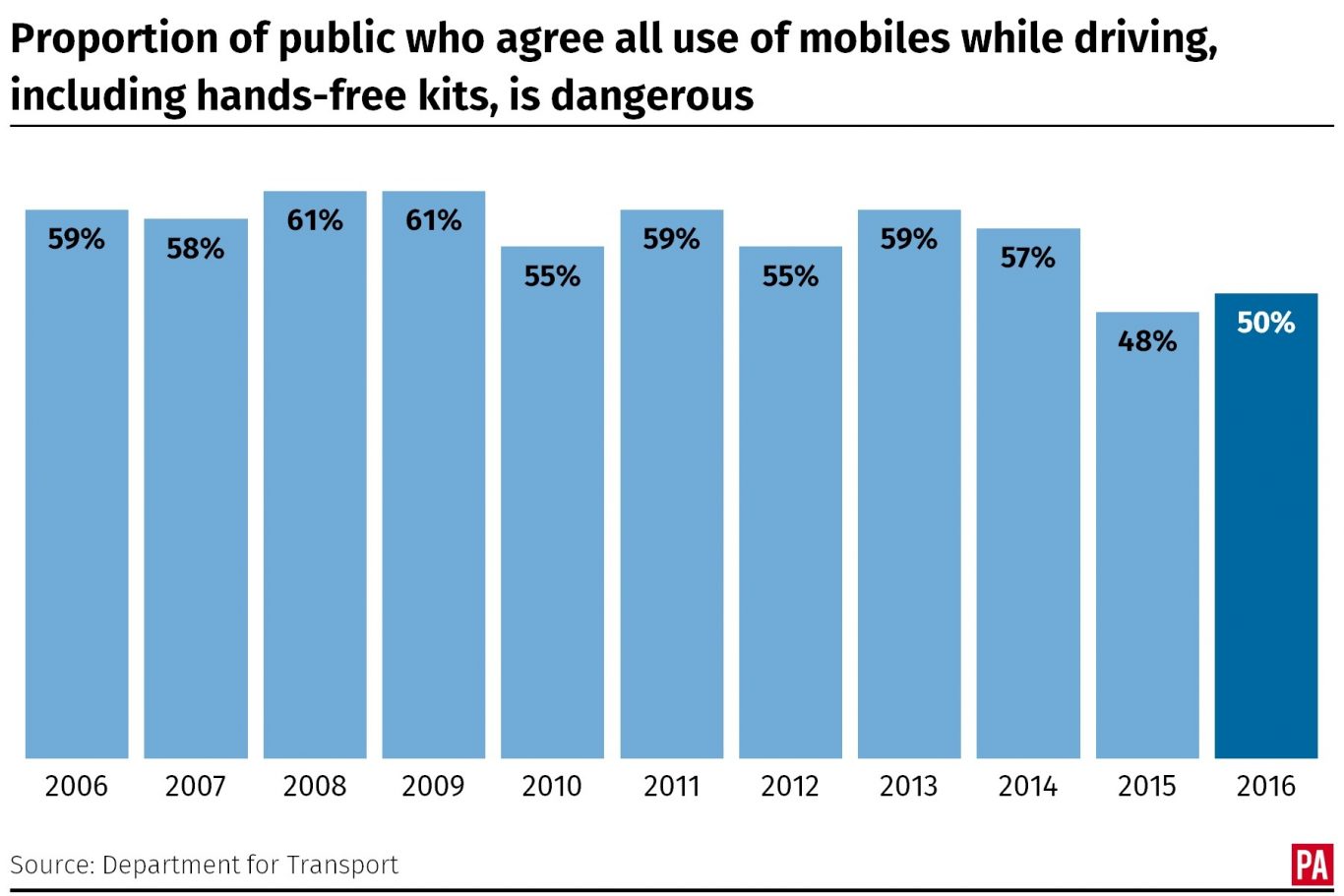
Half of Britons (50%) believe all use of mobiles while driving is dangerous, Government research has found.
A fifth (22%) of people polled said they “strongly agree” that using a phone behind the wheel – even with a hands-free kit – is dangerous, with a further 28% replying that they “agree” with the statement.
The overall number of people who think mobile use is dangerous for motorists has fallen since 2009, when the proportion was more than three-fifths (61%).

The figures were published by the Department for Transport (DfT) as part of its British social attitudes survey: 2016.
Twenty-two people were killed and 99 were seriously injured in collisions on Britain’s roads when a driver using a phone was a contributing factor in 2015, separate DfT statistics show.
Since March 1, drivers who use a hand-held phone have faced receiving six points on their licence and a £200 fine – up from the previous penalty of three points and £100.
Heading home for the day? Don't risk 6 points and £200 – put your phone away when driving. pic.twitter.com/3RRWEoJ1zL
— THINK! road safety (@THINKgovuk) August 15, 2017
Figures obtained by the Press Association revealed that more than 200 drivers a day were caught using their mobile phones illegally in the four weeks after the changes took effect, equivalent to one every seven minutes.
Motoring groups have warned that the crackdown on illegal mobile usage risks being undermined by a lack of dedicated traffic police officers.
RAC road safety spokesman Pete Williams said: “The fact that an increasing number of drivers don’t recognise that using a mobile phone at the wheel can be dangerous is a genuine cause for concern.
“The law is clear, and the penalties for disobeying it are now stronger for very good reason – a pinging, buzzing smartphone represents one of the biggest modern day distractions in a moving vehicle.
“Government and industry must not let up in their efforts to explain the risks of dangerous mobile phone use to UK motorists.”

Enjoy the convenience of having The Sunday Post delivered as a digital ePaper straight to your smartphone, tablet or computer.
Subscribe for only £5.49 a month and enjoy all the benefits of the printed paper as a digital replica.
Subscribe